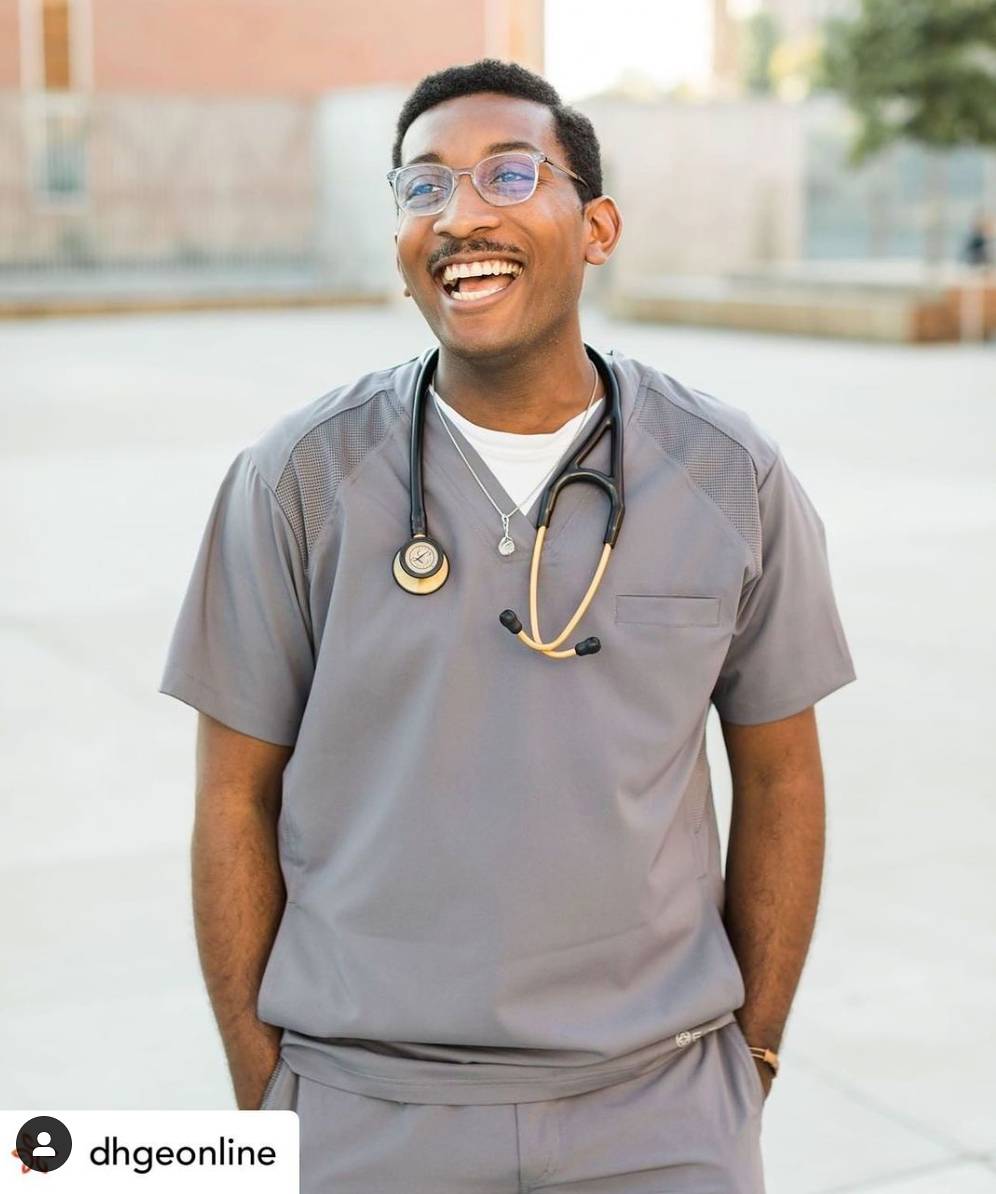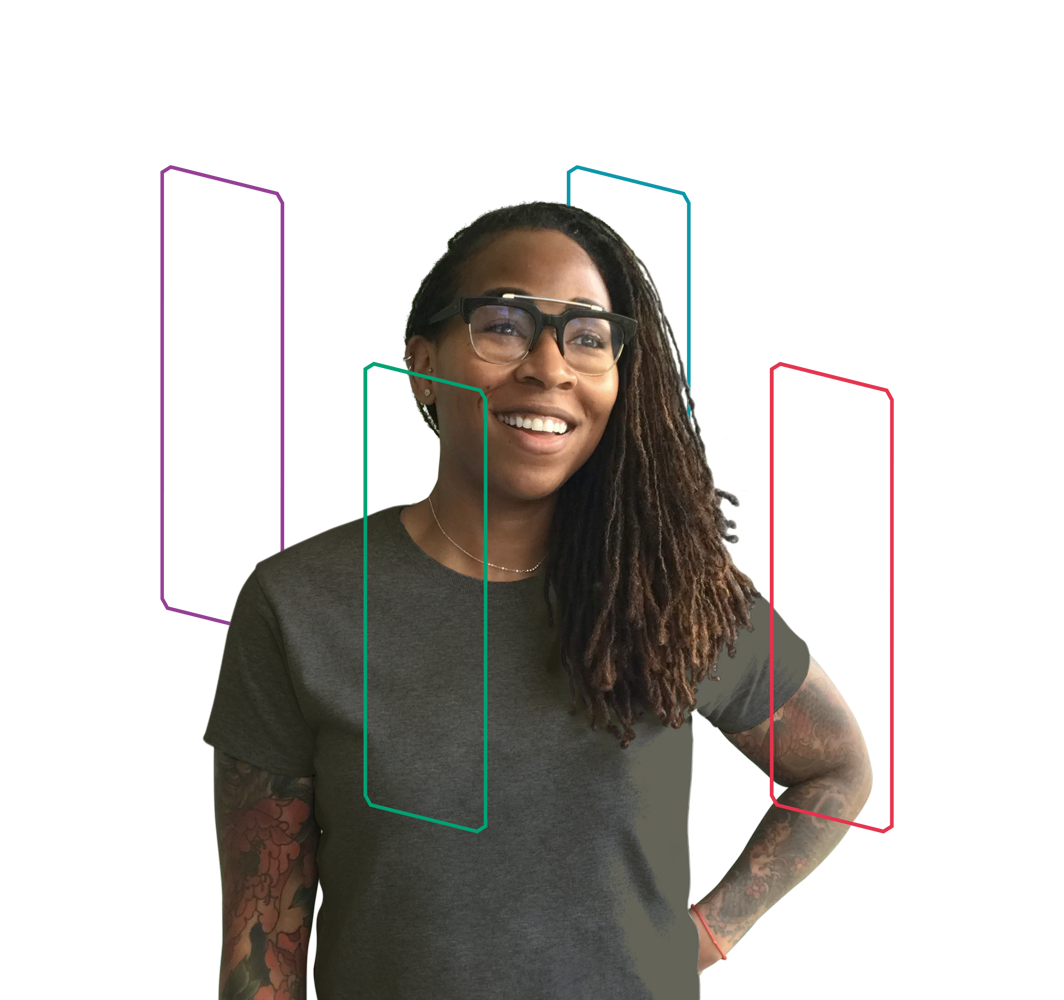Are you a skimmer?
No problem, we’ve got you! Take a spin through the list of interview highlights below, complete with timestamps to skip straight to the episode content that’s most relevant to you.
Introduction
It can be overwhelming to think that, on top of everything else we do, nurses also need to be leaders in the fight for health equity.
After all, most of us SHIFT Talkers aren’t as far along in our careers as Stacy, from Episode 2. She brought 20 years of experience to her role as Boston Hope’s CNO. And not all of us can set up a clinic, like Nikki from Episode 3. She’s built a whole practice dedicated to helping women of color. (If you haven’t heard these episodes yet, definitely go back and listen!)
What these nurses have accomplished is commendable, no doubt. But when Nacole talked to Pat McMurray, it really hammered home that there’s a huge range of ways to make an impact — and they’re all important. On every shift, nurses can help make our patients feel heard. On every shift, we can take steps toward correcting injustices. We hope that the conversation with this young thought leader, teacher and practicing bedside nurse shows you that whoever you are, and wherever you work, you have opportunities—both big and small—to advance equity.
Interview Highlights
4:38
Pat on why it’s important to make education more accessible and keep multiple pathways to nursing open: “Historically … nursing has been predominantly white, predominantly female, and that doesn’t match what the population is.”
Pat believes it’s critically important to keep multiple pathways to nursing open — not just the BSN path. Not everyone who wants to go into nursing has the same resources starting out, and an associate’s degree is accessible to far more potential students. And as Pat discusses in his published work on the subject, research shows that minority nurses, particularly Black nurses, are more likely to go on and get their BSN and continue on to receive advanced degrees if they are able to enter the profession through an ADN program. That’s why Pat is so passionate about starting conversations about the value of these programs, which, by the way, is how both he and Nacole entered nursing. Both now have multiple nursing degrees.
8:06
Pat on why we need a more diverse nursing workforce: “I think that coronavirus has been a big example of why we need diversity.”
Pat uses COVID-19 and, more specifically, vaccine hesitancy, as an example of why it’s important to have providers that mirror the ethnic and racial makeup of the populations they treat (although he does not like that term — listen to learn why). There’s a long history of harm done by the medical profession to minority groups, and that includes harm done by nurses. Pat points out that trying to bully people into making a medical decision like getting a vaccine or criticizing them for something like waiting on the vaccine is not only inappropriate — it’s ineffective. The reality is that patients aren’t always comfortable talking to providers who don’t look like them. In addition to striving for a more diverse workforce, Pat says it’s important for nurses to hone their “SciComms” (science communications) skills so that all patients understand the choices and advice they’re offered.
12:44
Pat on how he developed his perspective on equity: “I was fortunate enough to be in an [ADN] program where the majority of people are Black and indigenous people of color, or BIPOC.”
Pat feels that he “grew up” in nursing with the idea of equity in the forefront. He mentions his mom’s influence and believes that because he went to the same nursing school that she attended (just like Cyrus — go back and listen to Episode 4 if you haven’t already), he had guidance and a role model for seeing health care through an equity lens early on. Pat feels strongly that in addition to education, lived experience is an important aspect of developing knowledge and becoming what he calls “well-rounded.” Pat and Nacole agree that the conversation around the limitations of ADN programs, as well as perceptions of LPNs as inferior, are neither productive nor accurate. In Pat’s view, the conversations in nursing shouldn’t be about this degree versus that degree — they should be about how to progress academically as a profession.
15:58
Pat weighs in on how well nursing schools are preparing students to understand equity: “Nursing schools are developing their ability to prepare nurses to think that way … education is still very Eurocentric.”
Pat points out that even in his program, which had a very diverse student population, typically the patients pictured in course materials—and even test subjects—would be white. He does have hope that nursing education is changing because of the growing emphasis on social determinants of health, but he points out that the Western world for the most part still defines what is “normal” and what is not.
16:53
Pat explains how he incorporates health equity issues into the pharmacology courses he teaches: “We think that pharmacology is a very scientific course … we don’t realize … we need to talk about issues of access … to medications.”
He gives a great example of medication labels—how would a nurse navigate a situation where their patient can only read Spanish? In Pat’s view, health equity shouldn’t be a stand-alone course. Professors need to stop separating socioeconomic factors from the science of nursing. After all, nursing is a social science. As a teacher, he makes it a point not to speak about things he doesn’t have knowledge of, however. Instead, he’ll find the right resources for his students, whether that’s other nurses or other materials. This is an important lesson for SHIFT Talkers who don’t have the lived experience of being a minority receiving health care or facing challenges related to social determinants: As so many of our guests have emphasized, you don’t have to have all the answers—you just need to be willing to listen and ask the right questions.
19:00
Pat defines concept-based learning and explains why it’s so effective: “Rather than isolating content … we show you how to take [a] concept and apply it to different situations.”
Concept-based learning is an approach used in both ADN and BSN programs, which emphasize hands-on learning. In a student’s first semester, he or she might take only one course, but that course could be worth 10 credits. And it could, for example, infuse the fundamentals of nursing, nursing assessment and the concepts of pharmacology. According to Pat, this learning style “layers knowledge” and helps it stick with students better (Nacole agrees).
22:14
Pat explains how community-based care can help address health inequities: “When you implement nurses in the community, it decreases the need for hospitalization, and it decreases the burden on tertiary care.”
Pat empathizes with busy ER nurses who are treating patients who use the ER as their primary source care out of necessity. He knows these nurses don’t always have the time to do as thorough an assessment on patients as they would like. And that’s exactly why it’s so important to make care accessible in the community. He believes, as he told us in his SHIFT Talker Spotlight, that there are a lot of creative ways to do this. In that interview, Pat gives an example of a company run by two RNs who offer health care services packages at affordable prices. Services include things like accompanying a patient to the doctor or checking in on a patient who lives alone after surgery. There’s also public health nursing, although the poor pay is an issue keeping many nurses out of this specialty. Pat’s point overall is that there are increasingly creative ways for nurses to show up in the community, and it’s important to pursue those opportunities and explore new roles for nurses.
24:15
Pat explains why he sees nursing as an act of social justice: “We live in a world where so many people aren’t treated fairly … I have the opportunity for that short time I’m with [a patient] to … negate or correct the wrongs.”
This is really the root of Pat’s episode—he believes that nurses can impact equity within their existing daily practice. If you don’t have the resources or desire to start a clinic, or if you aren’t advanced in your career, you can still make a difference by making patients feel valued. By doing your part to make sure they feel heard and that they aren’t in pain. Sometimes just listening is enough.
26:16
Pat on nursing being a unique combination of art and science: “At every step of the way, nurses are considering those two … nurses inherently think on a community level.”
Pat and Nacole have a spirited discussion about nursing as a social science. They both believe that the reason nursing is the most trusted profession is that nurses inherently think on a social level. Nurses are the ones who know that there’s more to a patient’s story than their lab values.
27:37
Pat shares that Nurse Nacole inspired him to become a thought leader (awwwww!): “Literally you and Nurse Mo were the first Black nurses I saw. I was like, we got some Black nurses out here reppin’!”
If there’s a heartwarming moment that sticks out in Season 2, this is it. Pat has so much love and respect for Nacole. She was his role model as an influencer. Her relatable, honest style, paired with the nursing knowledge she dropped, motivated Pat to step up on social himself. This is also a really interesting exchange because Pat and Nacole talk about the differences between their on-the-clock and off-the-clock personas.
31:39
Pat’s personal COVID-19 project: “I saw people walking around, and I’m like, how do you get a mask when you don’t have money to buy one?”
Pat witnessed homelessness in his own community early in the pandemic, and like many of our other SHIFT Talkers, he wanted to take action. He put a call out on Twitter to figure out what essentials were most in need by persons experiencing homelessness to protect against the virus, and then he started putting what he called “keep warm kits” together and distributing them himself. If this isn’t nurse activism in action, we don’t know what is!
33:00
Pat gives advice about where to start when it comes to advocating for health equity: “If you’re not sure where to start, just look around. I think a lot of it is paying attention.”
This is what we love so much about Pat—his observation that nurses are hardwired to help, and that we can offer help in just a few short moments with a patient that can add up across an entire career. Pat sees nurses as partners with their community, sharing the work of keeping people well. As he tells his students, nursing is not just assessing people—it’s also assessing their environment. So when in doubt, look around and pay attention. If you observe a problem but don’t know how to deal with it, use your problem-solving skills and track down someone who does. We can all do this work, SHIFT Talkers. In many ways, we already are.



